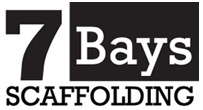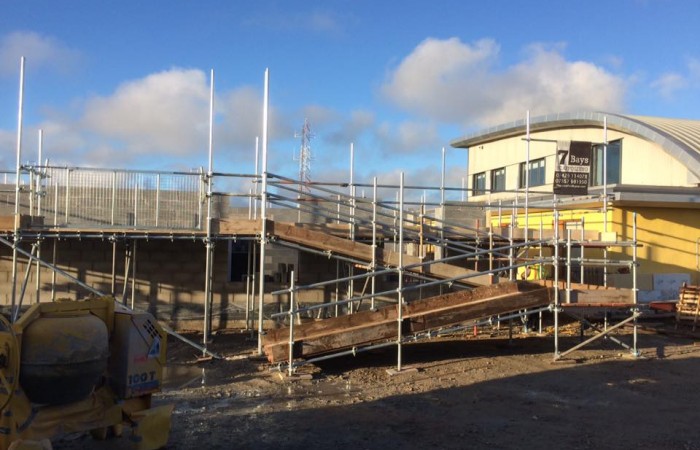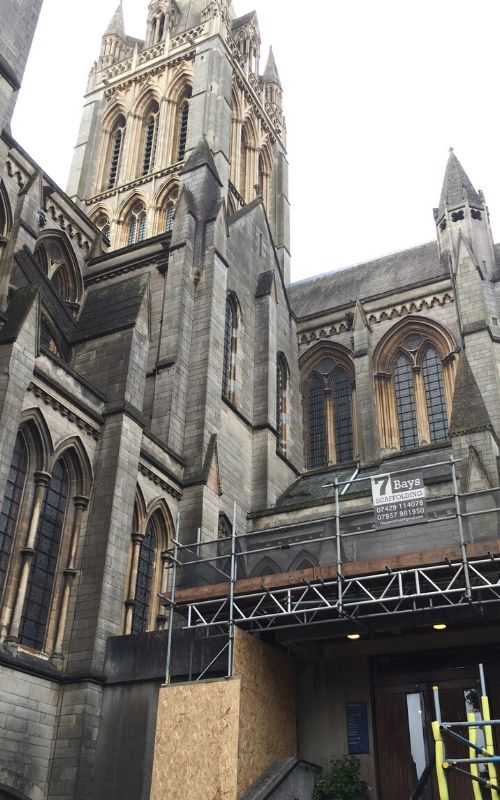Scaffolding on the public highway holds potentially more risk than that on a building site, purely because the general public is not aware of hazards associated with scaffolding which could make them more susceptible to possible injury. For this reason, when requiring highway scaffolding in Cornwall it is vital that you use a fully-trained, properly licenced scaffolding company with lots of experience in street works and public highway scaffolding, like the dedicated team here at 7 Bays Scaffolding.
Cornwall Highway Scaffolding
Scenarios where highway scaffolding is required includes:
- On a public pavement or road
- At a premises or location that is visited or accessed by the public
- At schools and residential and care homes
- At a domestic household for a private customer
Highway scaffolding can only legally be erected by qualified scaffolders. When erecting scaffolding in the public domain, stringent planning is required to ensure that all parties are safe for the erection, use, alteration, maintenance and dismantling of scaffold structures. If your works require you to erect a scaffolding structure on the highway, you are required to get a licence from the Highway Authority, and the scaffolders you choose must hold the relevant street works qualifications and a £5million public liability insurance.
Safety is of paramount importance on any construction site, and making sure everyone is safe extends beyond solely the workers on the site. There are rules in place to ensure the safety of the highway scaffolding, and these rules must be adhered to by all parties to ensure that the scaffold structure which is erected in the public domain is as safe and secure as possible. These rules are:
- Each scaffold sited in the carriageway should be guarded in accordance with the Safety at Street works and roadworks code of practice 2013
- Streetworks scaffolding in Cornwall needs to adhere to the Cornwall Council schedule of scaffold conditions, as can be seen here
- Warning signs for traffic are to be provided where necessary
- Working overhead signs to be clearly displayed
- Company name, daytime telephone number and emergency out of hours telephone number to be clearly displayed at all times
- At night (30 minutes before sunset to 30 minutes after sunrise) and if sited in or within 45 cm of a carriageway, each vertical standard shall be lit
- If sited within 45 cm of carriageway, white painted sleepers with cones attached to them are to be placed next to the structure
- Vertical standards are to be painted white for a minimum of 2.5 metres from pavement level
If proper provision for pedestrians cannot be maintained through the scaffolding and are to be diverted onto the carriageway, a pedestrian walkway of 1.2 metres minimum width shall be
provided with a robust pedestrian barrier with tapping rail and handrail. When erecting the scaffolding, it must be positioned considerately so that it does not impede access to street lighting columns or illuminated traffic signs. Scaffolding must also be placed away from surface water drainage of the highway and not obstruct access to any manhole or council apparatus.
Sometimes when erecting scaffolding in a public space, it’s necessary to temporarily eliminate public access (by closing the pavement for example). Every individual project will need to be risk assessed on its own merits to protect the general public and others at all times. Debris netting is also a requirement in order to ensure that the public are not at risk from falling objects.
Scaffold Pavement Walkways
When using street works scaffolding, it’s usually vital to install a pedestrian walkway (or ‘pavement lift’) which allows the public to walk safely under the first lift of scaffolding on a public pavement. The pedestrian tunnel may be given additional safety features such as lighting, protective boarding or foam padding around the uprights etc to provide further peace of mind that the public will not be at risk.

Sometimes the weather can prove a risk (especially here in blustery Cornwall!) so extra measures can be required for very high risk overhead projects (such as suspended/hanging scaffolds in built up city centres). One way to offer secure protection around the exterior of a building is with shrink wrap; the most reliable method of containment and protecting pedestrians. Shrink-wrapping is versatile, lightweight and gives a drum-tight finish which looks professional and smart. Temporary roofing is another option and gives added peace of mind and safety to your street works in the public domain . A substantial close-boarded overhead covering such as a shrink wrap or temporary roof will protect passersby below from spillage of materials, and should be suitable to support any loads to be placed above it or materials falling on to it from above.
Whatever your next construction project, be it a street works project on a public highway or not, the team here at 7 Bays Scaffolding are second-to-none. Our fully trained and qualified scaffolders in North Cornwall can complete all aspects of domestic and highway scaffolding services, regardless of the type, size and job specifications put forward. We look forward to meeting you and making sure your next project is as safe and secure as it can be. If you’d like us to quote you for your next job please get in touch and we’ll be only too happy to do the honours. We look forward to hearing from you!



